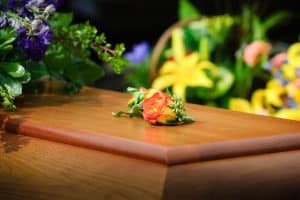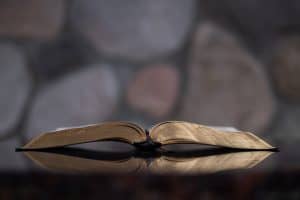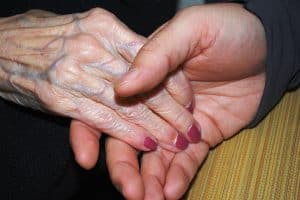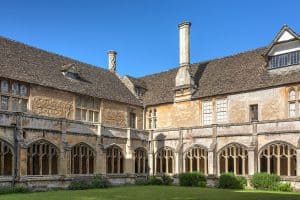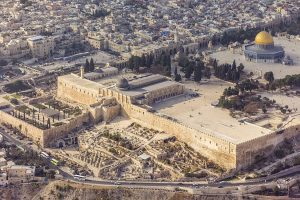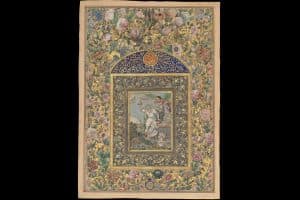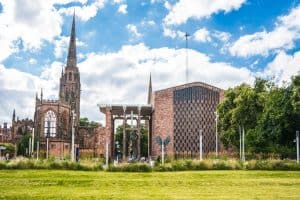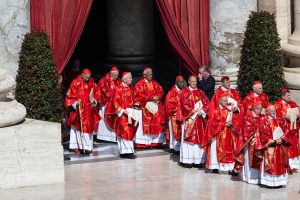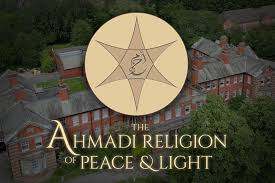by Tim Wyatt
The Church of England is the country’s established Christian denomination. It split from the Catholic Church in the 16th century and today, despite decades of decline, its parishes still cover every inch of England and its institutions remain deeply embedded in national life
Key facts
The Church of England understands itself as one branch of the apostolic and Catholic church around the world and shares the basic tenets of Christianity with other denominations.
Although it can trace much of its history back to the arrival of Christianity in England more than a 1,500 years ago, it really began in 1534 when King Henry VIII broke the church away the authority of the Pope during a conflict over his efforts to annul his marriage to Catherine of Aragon.
As such, the church’s teaching and practice has an unusual mixture of both Catholic and Protestant elements, reflecting its complicated heritage during the Reformation.
It is the mother church of the Anglican Communion, a family of like-minded churches around the world who mostly trace their history back to the British Empire and Christian missionaries sent from the Church of England.
Despite growing secularisation in recent decades, the Church of England remains the legally established church, with the monarch as its supreme governor and the automatic right for some of its most senior bishops to have seats in the House of Lords.
Today, the church says 1.11 million regularly worship at its 16,000 churches, although these numbers have been falling steadily for years.
How did the Church of England begin?
The church gradually evolved out of the first arrival of Christians in England, which began during the Roman era in second or third centuries. The church itself claims it began with the Pope sending Augustine of Canterbury to England in 597 to convert the recently arrived Angles. He established a church in Canterbury, which became Canterbury Cathedral, and started the long line of archbishops of Canterbury, the most senior figure in the church.
Almost 1,000 years later, the English church broke away from the authority of the Pope and the Roman Catholic Church during the 16th century. This was caused by Henry VIII’s split with Rome over his efforts to annul his marriage to Catherine of Aragon, his first wife and a Catholic Spaniard. The king then named himself supreme governor of the church in the place of the Pope, a status that has been passed down monarch to monarch to the Queen today. Henry also disbanded monasteries, priories, nunneries and convents, confiscating most of their wealth and property.
Despite the break with Rome occurring during the wider Reformation in continental Europe, Henry was not theologically aligned with Martin Luther and the other reformers who were battling to free the church from the influence of Rome. However, after his death and under the rule of his son Edward VI the church tilted decisively towards the Protestantism of the Reformation.
This was typified by the creation of the Book of Common Prayer (BCP), by Thomas Cranmer, the highly influential Archbishop of Canterbury. The BCP laid out liturgies and church services in English, not Latin, and moved theology in a more Protestant direction (for instance, justification by faith alone, not good works). The BCP remains the authoritative text for the Church of England today.
However, Edward’s reign was brief and after he died his Catholic half-sister, Mary, took the throne. She sought to return England’s church back to Rome’s orbit and persecuted many Protestants, sending hundreds to the stake, including Cranmer.
Mary reigned for five years and when she died, she was succeeded by her half-sister Elizabeth, who resolved the fractious situation of the church in what is known as the Elizabethan Settlement. This sought a middle ground between hardline Protestantism and a return to Catholicism, maintaining much of the old Catholic church order and much of the new reformed teaching. This settlement persisted throughout the centuries, despite a brief interruption during the English Civil War and Protectorate of Oliver Cromwell when more radical Puritans and Presbyterians took over and abolished bishops. However, the former system was quickly restored under the monarchy of Charles II.
How is the church organised?
The Church of England is divided into 42 dioceses, each covering a region of England (and the Isle of Man). Each diocese is further sub-divided into deaneries, which are made up of parishes. Every part of England falls into a parish, which each have a parish church and dedicated priest who is responsible for ministering to the inhabitants.
Dioceses are led by bishops, and overall leadership of the church is in the hands of the archbishops of Canterbury and York. However, despite this hierarchical structure, for the past century governance has been shared with the General Synod, an elected body containing lay parishioners, vicars and bishops and votes on doctrine and policy.
The Book of Common Prayer remains the fundamental authoritative guide to the church’s liturgy and practice, with services laid out for every purpose. However, after decades of internal wrangling the church agreed a new, updated liturgy in modern, contemporary English in 2000 as an alternative, called Common Worship. This is now the most commonly used service book in most parishes, although the BCP still remains popular, particularly among the traditionalist Anglo-Catholic wing of the church.
The Church of England believes in the “threefold order of ministry”, which means there are three types of clergy: deacons, priests and bishops. You can be a priest only once you have been ordained a deacon, and you can become a bishop only if you have been ordained a priest. Priests are the bulk of the clergy and are responsible for leading Sunday worship, pastoral work in the community, conducting baptisms, weddings and funerals and, most fundamentally, presiding over services of Holy Communion.
Partly because of the history of how the Church of England came into being, there are many informal factions and traditions within the denomination. The three main wings are:
- Anglo-Catholics: so called because they combine Anglicanism with more Roman Catholic traditions and style. They prefer more formal services, with choral music and organs, clergy in robes, incense and bells. They tend to emphasise the tradition of the church very highly, although in terms of beliefs can vary enormously from ultra-conservative to more liberal.
- Evangelicals: they tend to have a “low” style of worship, which prioritises informality. They often sing modern songs rather than traditional hymns, their priests sometimes do not wear dog collars, let alone robes, and they aim to make their services accessible to people who may not normally come to church. In terms of belief, they take the Bible as their touchstone and see it as having the ultimate authority, not modern society or traditions of the church. A significant and growing subset are charismatic evangelicals, who are strongly influenced by Pentecostalism and make engagement with the Holy Spirit and the supernatural an important part of their church life.
- Liberals/the broad church: this group tends to have a middle-of-the-road worship style, which is neither very fussy nor very informal but happy to bring together elements from any tradition. Liberals believe that faith is renewed by new insights and interaction with contemporary society and are often in the vanguard of progressive change within the church.
What do Anglicans believe?
The Church of England shares the basic tenets of Christianity with other historic denominations. As explained above, its distinct approach is to find a middle way between Catholicism and Protestantism, sometimes called the via media (Latin for middle way). Another important principle is the conviction authority for deciding doctrinal issues rests on the so-called three-legged stool of scripture, reason and tradition (which also sets it apart from other denominations that tend to lean towards one of the three over the others).
Its teaching is summed up in the Thirty-Nine Articles, a document drawn up during the fractious English Reformation in the 16th century. These establish core Anglican beliefs about the doctrine of God, scripture, sin and salvation, the church and authority, and the sacraments.
Because of its complex birth, the Church of England’s teaching in some places is deliberately vague, to encompass a wide spectrum of belief on issues such as transubstantiation (whether the bread and wine during communion is miraculously transformed into the actual body and blood of Jesus). To this day, many members of the church believe quite different things on flashpoint issues, such as the doctrine of the priesthood, sin, salvation, communion and more.
How do Anglicans practise their faith?
The central act is a service of worship at church on a Sunday. Traditionally, this should always include communion and normally still does, but some more evangelical parishes focus on preaching from the Bible, prayer and singing hymns or songs.
Like other Christians, Anglicans also pray privately and read the Bible, often in small groups from their church during midweek meetings. Distinctive Anglican worship can be found in particular at Anglo-Catholic parishes and cathedrals, where historic and more formal sung worship services, such as evensong, are popular.
To be initiated into the church, believers must be baptised by a priest. This is commonly done as a baby but can also be requested by adults, including those who convert to the faith. The second rite of initiation is confirmation, where those who were baptised as children can confirm the promises their parents made on their behalf. Often done as a teenager, it is common for people to undertake a short course of classes in basic Christian teaching before being confirmed. Confirmation can be done only by a bishop, and so usually involves a special service either at a parish church or in the cathedral.
Despite the infamous dissolution of the monasteries by Henry VIII, there has been something of a revival of Anglican monastic orders in the past 200 years and a small number of Anglicans choose to become monks or nuns as a way of dedicating their entire lives to God. Some orders, including many of the newer ones, are not based in a particular building or revolve around cloistering monks away from society, but are more fluid, informal gatherings where those who take the religious vows can remain working in their previous jobs.
Finally, an important part of Anglican practice is engaging with social action and community work. This is especially evident with food banks, many of which are hosted by Church of England parishes, as well with the large network of ordained Anglican chaplains who offer pastoral care in settings such as hospitals and prisons.
How many Anglicans are there?
According to the most recent statistics in 2019, there were 1.1 million regular worshippers in the Church of England. However, this figure includes everyone who is in some way involved in a parish church; only 690,000 people actually attended Sunday church services. The larger figure represents a little over one per cent of the population of England. However, a larger group describe themselves as belonging to the Church of England without ever attending services — 12 per cent said their religion was CofE in the 2018 British Social Attitudes survey.
According to the church’s own statistics, the numbers attending parish worship have been steadily decreasing since at least the 1960s and 1970s. Most attendance measures have fallen between 15 and 20 per cent in the past decade to 2019.
However, the Church of England, partly thanks to its historic position in English culture and society, remains one of the main places people go for baptisms, weddings and funerals. In 2019, it conducted 89,000 baptisms, 31,000 marriages and 114,000 funerals.
What are the contemporary issues in the Church of England?
A major flashpoint over the past decade has been an internal row over the ordination of women as bishops. Although women were allowed to become priests in the early 1990s for the first time, they gained the right to ascend to the highest tier of the clergy in 2014 only after a bitter squabble between traditionalists and modernisers. Although a sizeable number of women have become bishops since the legislation was passed, there remains significant internal tension between the majority comfortable with the reform and the traditionalist minority who fear their theological opposition to women bishops is no longer tolerated.
Today, the main argument within the church is over sexuality. Growing numbers of lay members, vicars and bishops want to liberalise the church’s teaching, which still maintains the traditional doctrine that marriage can take place only between a man and a woman, and all sexual activity outside of such a marriage is sinful. Numerous reports, listening exercises, facilitated conversations and debates have taken place over the past decade into the issue, without coming to any conclusion on whether or not the Church of England should alter its teaching. There are numerous LGBTQ+ Anglicans and clerics (and their allies) who prominently argue for reform, and a majority of the General Synod voted against a 2017 report from the bishops that offered no change in doctrine. The latest report, Living in Love and Faith, in 2020, and has set the scene for what is expected to be the final showdown over the next few years.
The Church of England is also wrestling with how to stop decades of decline, which some forecasts suggest will lead to its eventual disappearance over the next 50 years. Under the leadership of the current Archbishop of Canterbury, Justin Welby, the church has embarked on a more vigorous programme called Renewal and Reform, which aim to boost the numbers of new vicars, redistribute church funds towards growing parishes, cut bureaucracy and administration, and energise the laity for more evangelism.
Finally, over the past decade there have been a number of safeguarding scandals, including cases of bishops and priests sexually abusing children for years without the church taking action. The hierarchy has engaging in numerous rounds of reforms to toughen its safeguarding procedures and “lessons-learnt” reviews, but a growing group of campaigners continue to call for more accountability for those who failed to report or prevent abuse and the creation of an independent safeguarding authority, rather than keeping child protection work in-house.
Tim Wyatt is a freelance religion journalist
Useful contacts
The Church of England’s communications department
Diarmaid MacCulloch, professor of the history of the church, Oxford University
Professor Linda Woodhead, sociologist of religion, Lancaster University
Professor Alec Ryrie, historian of Christianity, Durham University
Ian Paul, Anglican priest, theologian and member of the Archbishops’ Council, [email protected]
Paul Handley, editor of the Church Times, [email protected]


